How do we remember WW1?
- Published
- comments
Kids commemorate the end of the First World War
This year marks 100 years since the end of World War One - the first war that truly affected the whole world.
On 11 November 1918, a special agreement called the Armistice was signed which silenced the guns after four years and four months of fighting.
When this happened, many people celebrated, but it was also an extremely sad time as people reflected on the devastating impact that the war had.
No conflict before World War One had caused destruction on this scale before. Most families in the UK lost someone they loved - and lots of us, to this day, will have ancestors who were affected by it.
Many soldiers never came home and were buried in huge cemeteries in northern France and Belgium. Those who did return were often injured and badly affected by what they had experienced.
Every year in November, the UK comes together to remember not only the millions of people who lost their lives in World War One, but also those who have since lost their lives fighting on behalf of their country since then.
This year is especially poignant as we come together to remember the end of the conflict that came to be known as 'the war to end all wars', due to how destructive it had been.
This was not to be the case, though, and wars continue to be fought to this day.
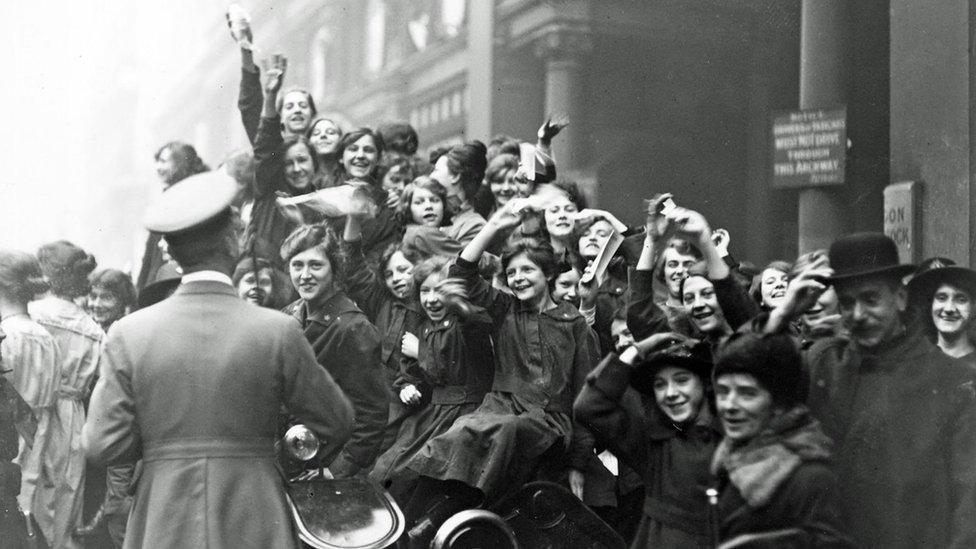
These crowds in London are seen celebrating the Armistice at the end of World War One, but it was also a time of great sadness as people reflected on the devastating impact of the war
Many events are taking place all across the UK and abroad to mark the significance of the centenary of the end of World War One.
The day will begin at the St Symphorien Cemetery near Mons in Belgium where the conflict began in 1914. This is where the fighting's first and last casualties were laid to rest, which makes it a moving place to reflect on what happened.
Why it's important to remember WW1
Here, we take a look at the different ways that we remember those who have lost their lives on behalf of their country and, in particular, what is happening this year to mark this important centenary.
The poppy
The red poppy is the most well known symbol to remember those who have given their lives in war - and it was chosen as a result of World War One.
That's because poppies grew on the muddied battlefields after World War One had ended.
A famous poem called In Flanders Fields was written in May 1915 by John McCrae, which says: "We shall not sleep, though poppies grow in Flanders Fields". In the wartime poem, poppies are a symbol of hope.

Poppies still bloom at the site in Belgium to this day
The tradition of wearing poppies as a symbol of remembrance began in 1921 - the same year in which the Royal British Legion was founded.
This year, many millions of people will be wearing this symbol to remember those who lost their lives in World War One.
The Royal British Legion, which runs the annual poppy appeal, is also marking the centenary with installations right across the UK to highlight reasons to say 'thank you' to the World War One generation.
A silence
Every year, at 11am on 11 November, two minutes' silence is held to remember those who have died in wars.
That is because this is the time at which the guns fell silent at the end of World War One.
This year, the silence will be especially poignant as this tradition actually began as a result of this conflict.
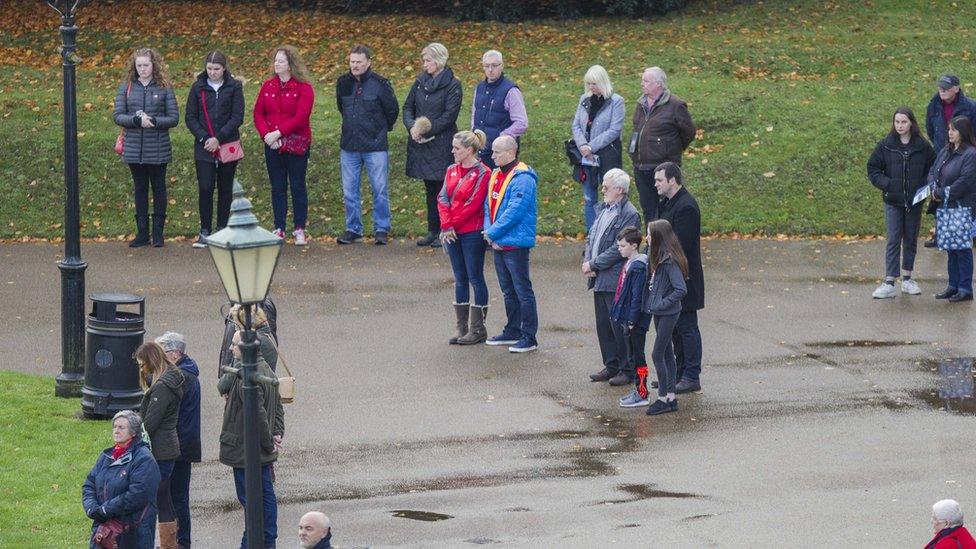
This pictures shows people in Cardiff in 2017 who stopped going about their daily business on 11 November to observe two minutes' silence
The first two-minute silence in Britain was held on 11 November 1919 - one year after World War One had ended - when King George V asked the public to observe a silence at 11am.
He made the request so "the thoughts of everyone may be concentrated on reverent remembrance of the glorious dead".
People wore black and everyone stopped going about their business and bowed their heads in respect. Buses and trains stopped moving, and the electricity was cut off to stop trams from running. Everyone just stayed silent to think about the soldiers who had died.
The tradition of falling silent at 11am on 11 November remains to this day and will be observed on Sunday 11 November 2018.
There is also Remembrance Sunday every year, which falls on the second Sunday in November. On this day, ceremonies take place at war memorials, cenotaphs and churches throughout the country, as well as abroad.
Movingly, Remembrance Sunday falls directly on 11 November this year, which isn't always the case.
Cenotaphs
When World War One ended, people across the world hoped it would be the 'war to end all wars'.
Special memorials called cenotaphs were built in lots of villages and towns to remember those who died in the fighting.
When the Cenotaph in London was built in 1920, people laid flowers there in memory of loved ones who had died in the war.
To this day, poppy wreaths are laid here - and at cenotaphs all over the UK - to remember those who have lost their lives in battle.
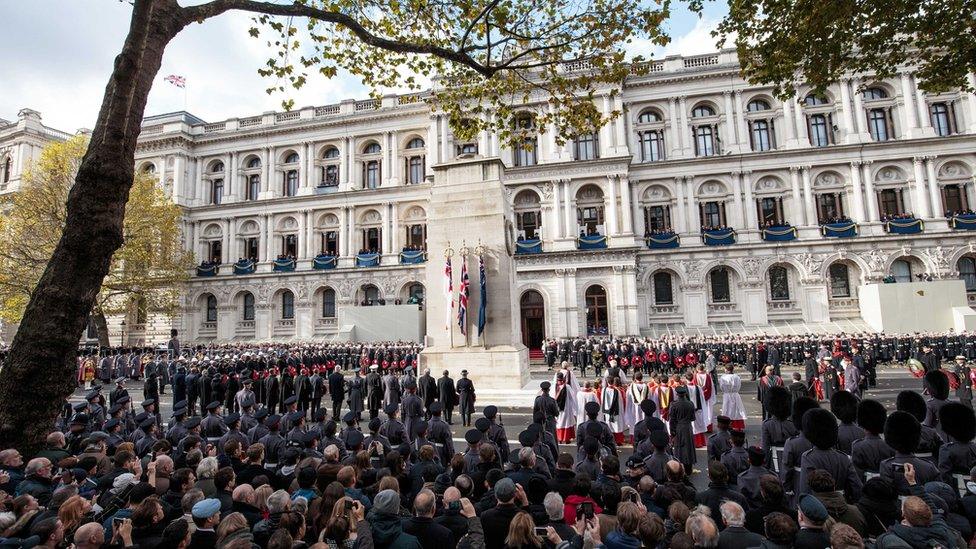
In this picture from 2017, the Prince of Wales, senior politicians - including Prime Minister Theresa May - and representatives from the armed forces gathered around the Cenotaph in London to pay their respects
This year, to mark the significance of 11 November 2018, 10,000 people will march past London's Cenotaph in an event called A Nation's Thank you - The People's Procession.
The Royal Family and top politicians will also gather at The Cenotaph in Whitehall in London for a special memorial service, which takes place every Remembrance Sunday.
The tomb of the Unknown Warrior
Since 1920, many people also remember those who have lost their lives in battle by gathering around a special tomb in Westminster Abbey in London.
It is called the tomb of the Unknown Warrior as the body of a soldier lies here whose name and rank nobody knows. People visit this grave - which contains soil from France - to remember all of the soldiers they do not know who lost their lives on the battlefield.
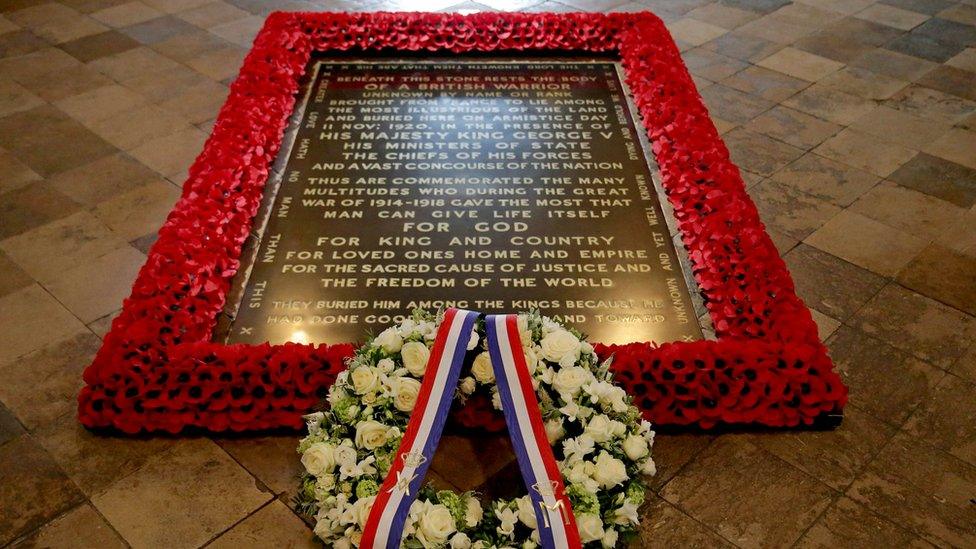
This is the tomb of the Unknown Warrior in Westminster Abbey in London
Not every soldier who died in World War One has a grave marked with their name, so for those who wish to remember a relative or loved one who died in this war, they can visit this tomb knowing that there is a small chance - no matter how small - that it just might be their loved one buried there.
This year, there will be a special service on 11 November in Westminster Abbey (along with others in Glasgow, Cardiff and Belfast) to reflect on the impact of the war, to give thanks for those who came home from World War One and to remember those who did not.
Bell ringing
"I'm bell ringing for my great great grandad"
As well as silence, bell ringing is often used as a sign of remembrance, as the sound of bells marked the end of the fighting.
At the end of World War One, Big Ben finally chimed again, having fallen silent during the war. Church bells had also been silenced too.
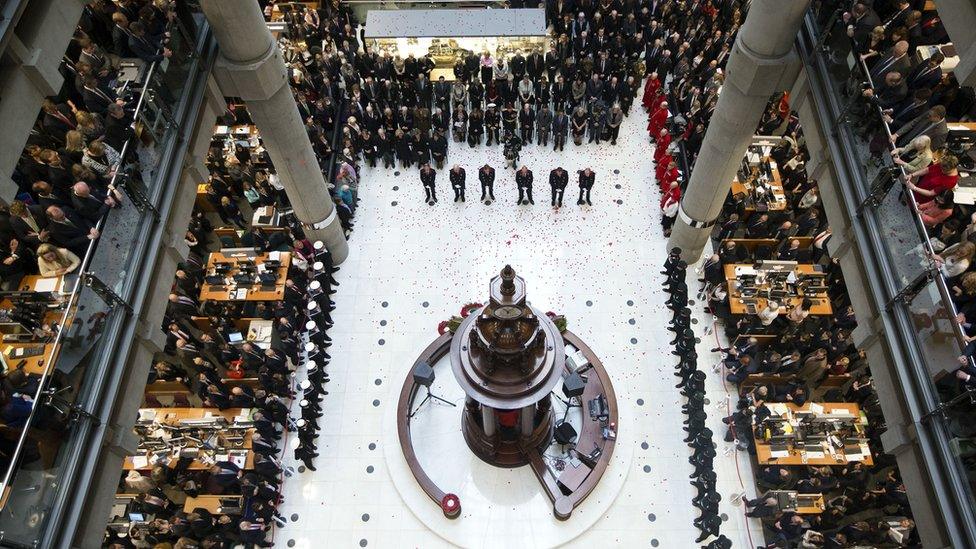
At Lloyd's of London, workers stopped what they were doing on 11 November 2014 to remember 100 years since the start of World War One, which they marked with the ringing of their special Lutine bell, which you see towards the bottom of this picture
So, this year at 12:30 GMT on 11 November, people all around the world are being encouraged to come together and ring bells to symbolise the outpouring of relief that took place once the guns fell silent and to remember the sacrifice that people made in the years leading up to this moment.
In a campaign called Ringing Remembers, 1,400 new bell ringers are being recruited for this in honour of the 1,400 that lost their lives during World War One.
Candles
Candles are often lit to remember those who have passed away. You might see people doing so in churches or cathedrals in a quiet moment.
This year, in the eight nights leading up to 11 November, there has been a special installation at the Tower of London called Beyond the Deepening Shadow: The Tower Remembers.
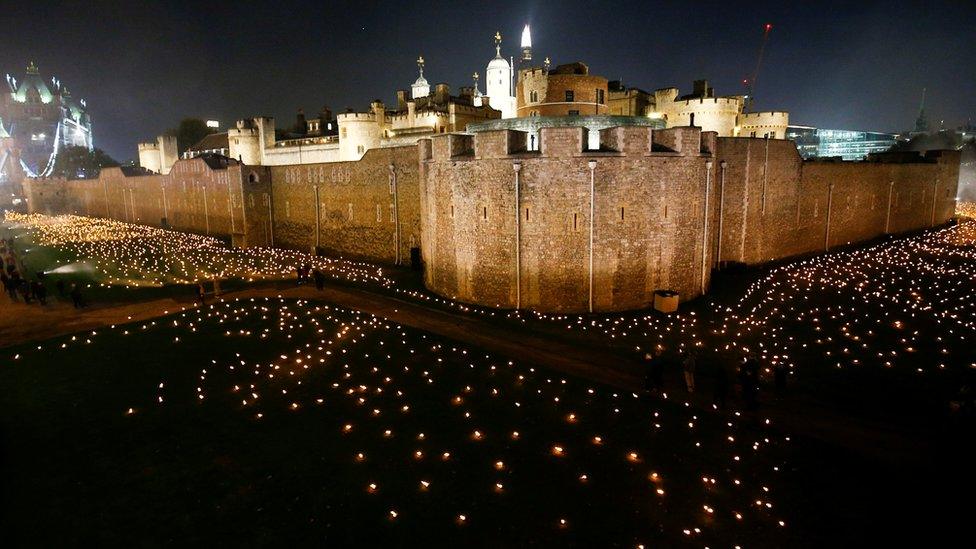
A moving installation called Beyond the Deepening Shadow: The Tower Remembers is marking the centenary of the end of World War One
The tower's moat was filled with thousands of small flames as a way to remember those who passed away in World War One. It was also accompanied by a sound installation.
Between 5pm and 9pm each evening, more and more flames have been gradually be lit so the tower is surrounded by a circle of light.
If you cannot see the interactive activity on this page, click here.
- Published10 November 2019
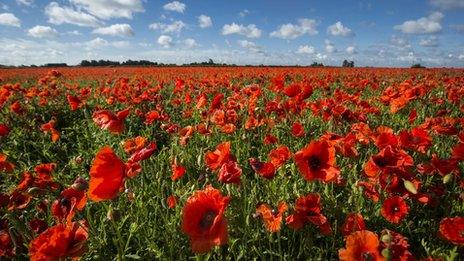
- Published27 October 2023

